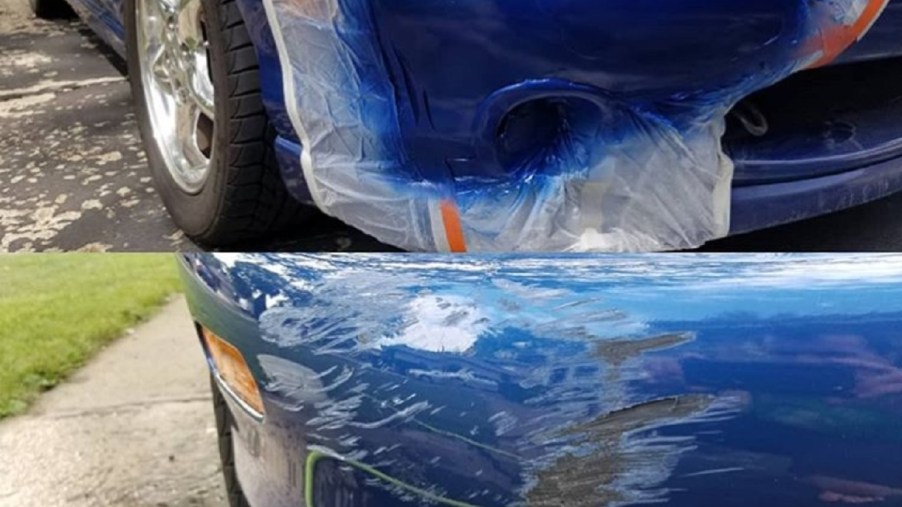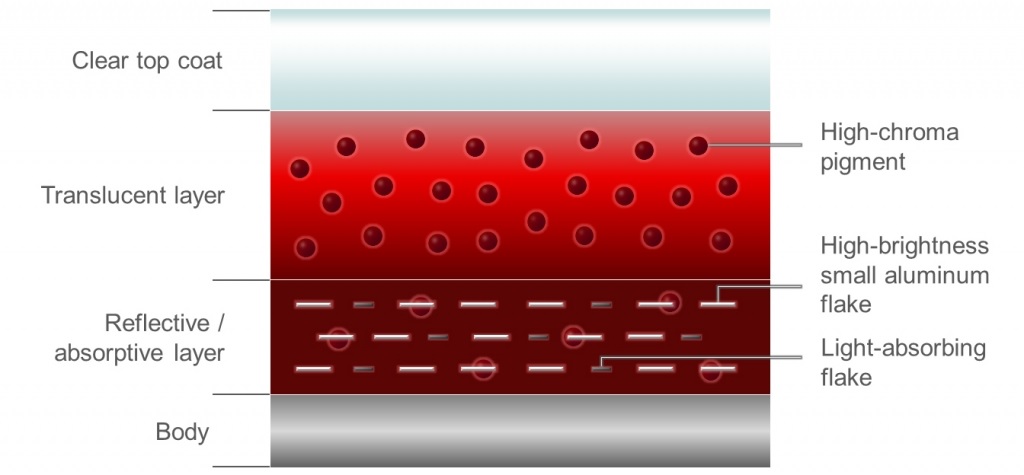
What’s the Best Way to Repair Your Car’s Paint?
Color isn’t the only thing your car paint is good for. It’s a key component in protecting the body from rust. And, just like any other component, it can be damaged, even from something like a car wash or bug splatter. Before you call a body shop to repair your car paint, consider a few at-home options that you can tackle in your own garage or driveway.
How car paint is made

Car paint repair starts with knowing how deep the damage goes. Your car’s paint isn’t a singular homogenous mass. It starts with a primer on top of the rust-preventing electro-coat, followed by the base and mid coats, which add the color. Then the clear coat, which provides the reflective shine as well as physical and UV protection, goes on top.
Minor paint correction can take care of most paint issues
Some damage stops at the clear coat, which simplifies the car paint and scratch repair. Much like with headlight restoration, the basic process involves smoothing out and filling in the imperfections, Popular Mechanics explains. And, for safety, it’s best done in an open and ventilated area.
This stage can fix minor scratches, as well as restoring swirl marks and minor abrasions. We recommend using polishing kits, which usually come with several buffing pads and compounds. 3M, Rupes, Sonax, and Meguiars are some of the best-known brands.
These are basically specially-formulated abrasives, which remove the surface imperfections. Depending on the severity of your paint’s condition, you may need to start by wet-sanding. But for most driveway detailers a simple compound and polishing two-step process is enough to restore shine and remove paint imperfections.
Toothpaste is sometimes cited as an inexpensive alternative DIY method of car paint repair, Autoblog reports. However, although it is technically an abrasive, as Donut Media shows above, it’s not really very effective.
Car paint repair with touch-up paint
Deeper scratches, ones that go past the clear coat, require additional repair steps. If the chip or scratch is fairly small, you can use touch-up paint pens or brush kits, The Drive reports.
To start, you’ll have to check what your car’s paint color code is. This is usually found on a sticker in one of your door jambs. Once you have your touch-up pen or brush kit, the next step is thoroughly cleaning and de-greasing the damaged area. Then, simply apply the paint as directed, and let it dry.
There are some downsides to using touch-up paint pens for car paint repair, though. For one, many don’t come with a sprayable clear coat. You’ll have to purchase that separately to make sure your car paint repair is protected. Secondly, as Badell’s Collision explains, it’s really best-suited for temporary repairs, especially if you don’t clear-coat it.
And, as stated previously, touch-up paint only works on relatively small scratches. What happens if, say, you hit your bumper on a brick wall accidentally?
Repairing failed clear coat on your car’s paint
Sometimes, paint damage goes beyond a simple scratch. Oxidation, chemical burns, excessive heat, and UV rays can all damage your car’s clear coat. When this happens, you’ll notice flakes, bubbles, and chips as the clear separates from the color below.
Repairing this problem is a bit more complex than either scratch repair or touch up paint. Because an entire layer of the paint structure has failed, you’ll need more than just a touch up to get things right.
After washing and masking off the area, use 800-grit sandpaper to sand down the rough area, Advance Auto Parts explains. Then wipe it clean with isopropyl alcohol and a microfiber towel. Then, use a compound and polish to restore the shine of the bare paint below. At this point, it will start to look like it’s done. However, you’ll still have to apply a new layer of clear coat to get lasting results.
Spray clear coat—which can be purchased in aerosol spray cans— is the easiest at-home solution. Use multiple layers, allowing the product to cure in between each application. Once it’s dried completely, use 2000-grit sandpaper to wet-sand the area. Then follow up with compound and polish to get a like-new shine on your fresh clear coat.
Deep and wide scratches need intensive care and repair
Whether it’s an unfortunate scrape with a parking lot bollard or a rogue shopping cart took aim at your ride, some paint damage is more extensive than any simple correction or coverup can correct. That said, with the right skills and tools, you can still repair your car’s paint without the help of a body shop.
You’ll need a spray can of your car’s paint, which you can purchase from a dealership and even some online marketplaces. You’ll also need some clear coat, and maybe even primer, depending on the depth of the damage.
If it’s on metal, you’ll want to start by sanding the affected area until it is smooth. This may mean going through multiple layers of paint, but that’s okay. Since you’ll be re-applying primer, paint, and clear coat, the goal with sanding is to remove rough edges and start fresh.
If you’re repairing plastic bodywork on top of the paint, you’ll need a kit with putty to fill in the gouges. But the rest of the repair is basically the same. Wash and mask off the area, then sand down the rough edges. After that, wipe down the area, apply the putty, wait for it to dry, then sand it smooth.
This same basic car paint repair process also works if you need to remove and paint-over rust, The Drive reports. Just sand the rust away, clean the area, then add putty and the requisite paint layers. If you find you can’t remove all the rust, you can utilize rust converters or reformers. These turn the rust into a paintable surface and prevent it from spreading.
Sometimes, a body shop is your best bet
Consider what you’ll spend on tools, paint, and time to repair your car’s paint. For most repairs, a few hours on the weekend is enough to make the car look like new again. But for more extensive damage, you may be better off having a professional handle the work. Still, if you’re up for a challenge and want the satisfaction of doing it yourself, this guide will help you get started.



